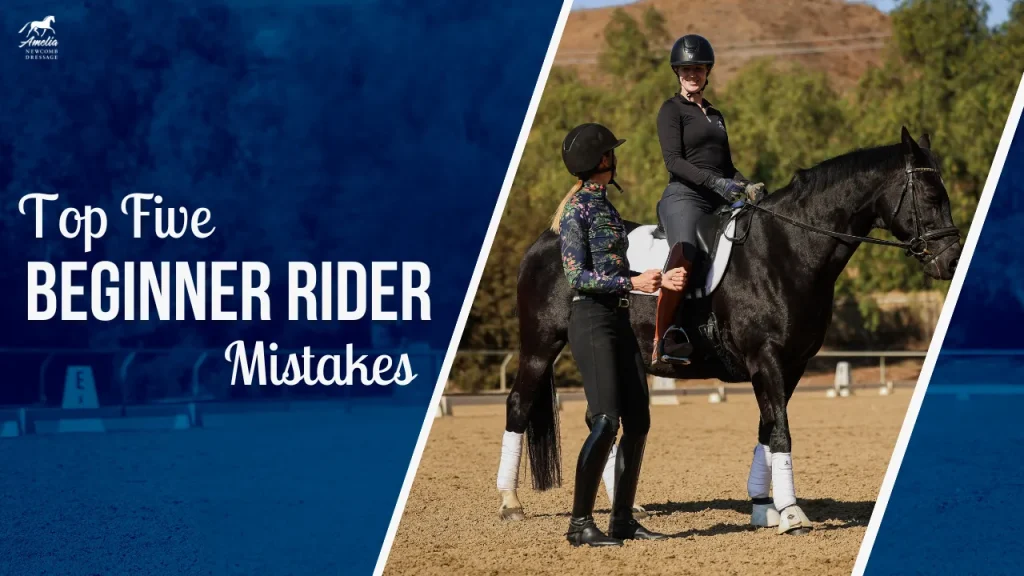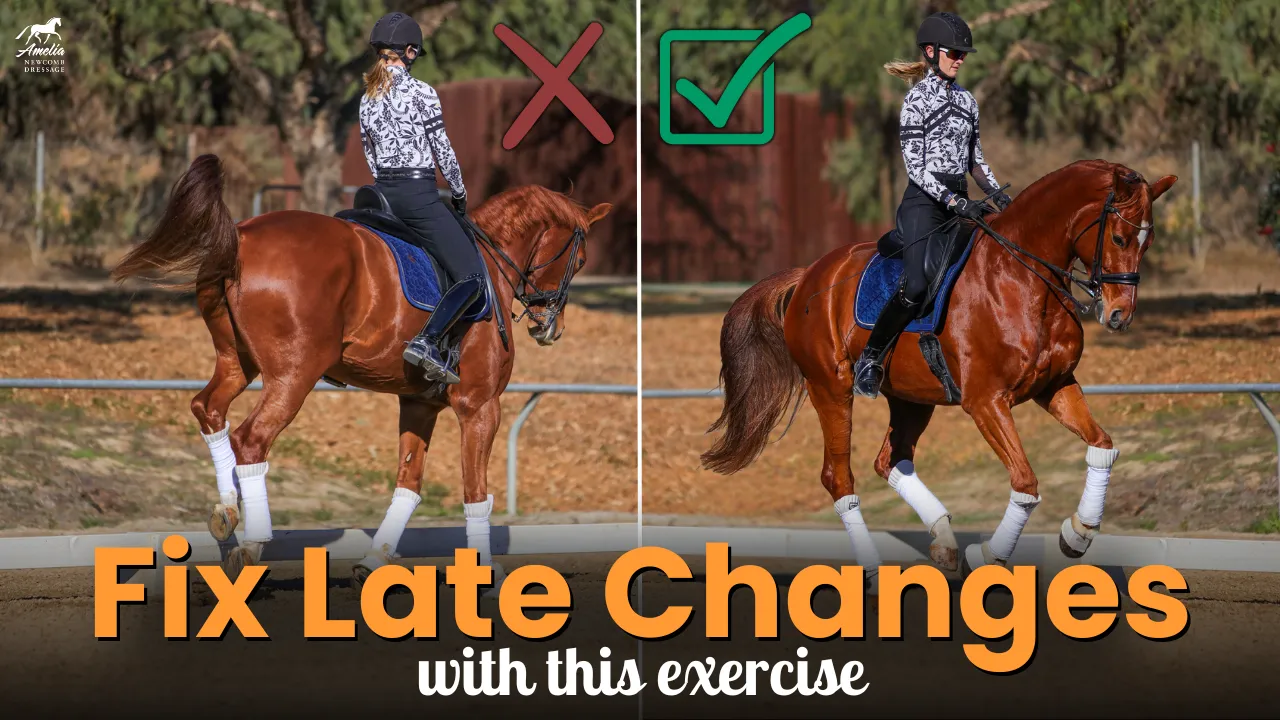One common mistake that I see a lot is what I call the pancake transition. This is when, in a downward transition you and your horse fall into a heap -you get tired, lean forward, and throw away the reins. Then your horse falls onto the forehand, and roots the reins from your hands! But don’t worry, we’re all guilty of riding bad transitions at times. Often we get tired or want to reward our horses and end up riding terrible downward transitions. It is always important to keep riding through the downward transition, make sure to get your horse in self-carriage, and then give them a break. In this video, I wanted to share with you one of my favorite exercises to improve your downward transitions, wake your horse up and get them on the aids.
This exercise is called the One Walk Step exercise because, in this exercise, our goal is to have only one walk step before we transition back to trot. It’s easiest to start this exercise on a circle. The first step is to achieve a nice, active trot tempo. Then, transition down to the walk, focusing on your seat. You want to squeeze your tummy in, half-halt, and use your seat in the downward transition to help your horse stay round. Count one to two walk steps, then close your leg and ask your horse to trot. Ideally, your horse will just listen to the light aid of you closing both calves, but you may have a escalate your leg aid if they don’t listen right away to a light aid. Practice these transitions focusing on smooth, fluid transitions while maintaining a steady contact. See if you can get only one walk step before your horse willingly trots on!
Once you and your horse can successfully do this exercise in both directions, you can take the exercise up a notch by using your half-halts to almost transition to walking, then asking for trot again. Essentially, you will be getting a small trot, then asking for a bigger trot, and then asking for a small trot, and then bigger again. This is a great test of your horse’s suppleness and connection and is the beginning of developing adjustability in your horse’s gaits and working towards the piaffe!
I hope this exercise helps you with your horse! Let me know in the comments below if it does!
Happy Riding!
Amelia
P.S. Want more great tips? Check out my Free Plan Your Ride PDF to learn how you can make maximum progress in your riding!












































